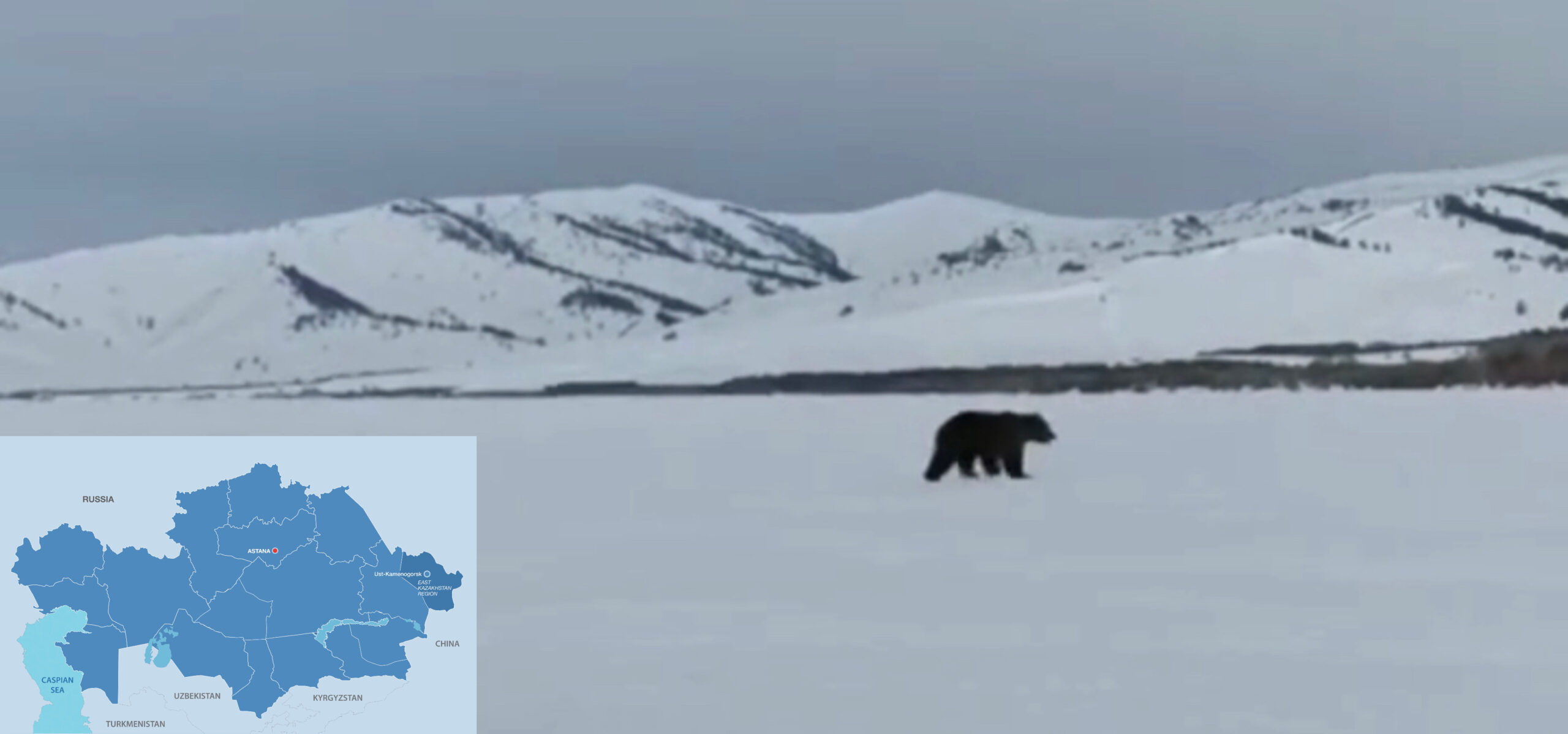ASTANA – As spring arrives, nature gears up for a season of change and awakening. In the corners of Markakol Reserve, one of nature’s iconic symbols, the brown bear, goes through its unique wake-up routine after hibernation, reports Kazinform, citing the reserve’s press service.

Photo credit: Screenshot from video Instagram Markokolsky Nature Reserve. Click to see the map in full size. The map is designed by The Astana Times.
Bears at Markakol Reserve snooze for around five to six and a half months, then get active for nearly seven months.
For bears living around Lake Markakol, veggies are their main munchies. In this special ecosystem, they find plenty to keep them going. The brown bear, one of the biggest land predators and a common member of the bear family, usually clocks in the wild for nearly 25 to 30 years. These hefty creatures, with adults tipping the scales at 300 to 500 kilograms and stretching up to two meters long, usually outweigh females by about double.
Their bodies are solid and kind of stretched out, with a noticeable hump. They have big heads with short snouts, wide foreheads, tiny ears, and eyes. Tails are stubby, barely poking out of their fur. Their strong limbs sport powerful claws made for snagging prey. Their thick, shaggy coats help them handle different climates. Winter fur is thick with a fluffy underlayer and long guard hairs, while summer fur is shorter and lighter.
The brown bear is listed in the least concern category by the International Union for Conservation of Nature Red List. Roughly 200,000 of them live worldwide, with around 100 in the Markakol Reserve.

